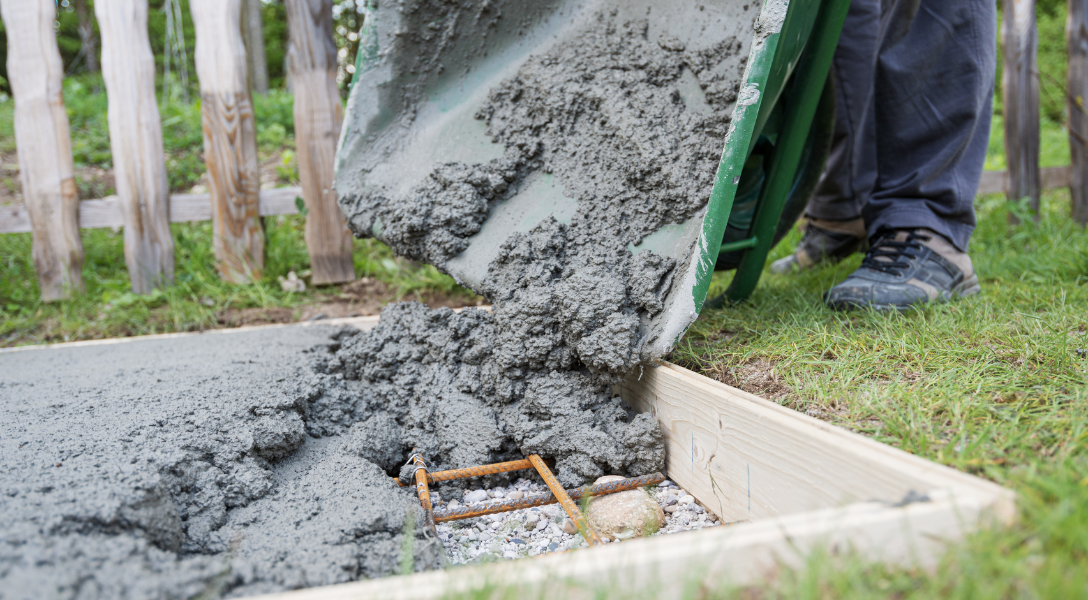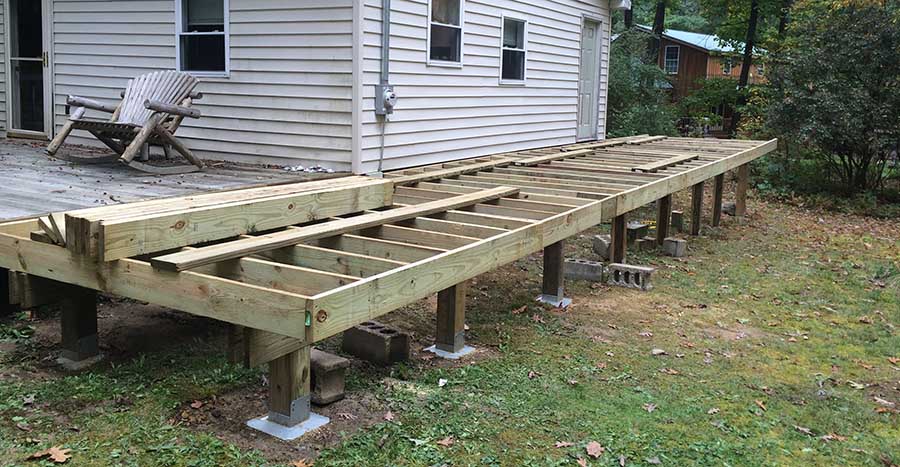Guarantee Security and Longevity With Appropriately Installed Deck Footings
Deck grounds may not be one of the most glamorous element of deck building and construction, however they play an important duty in guaranteeing security and long life. Correctly set up grounds offer a strong structure for your deck, preventing typical concerns like drooping, shifting, and even collapse. Choosing the best kind of ground and appropriately installing it can be a complicated procedure. In this conversation, we will certainly explore the significance of appropriate deck grounds, variables to consider during setup, various sorts of grounds readily available, detailed installation guide, and maintenance suggestions for making sure durable grounds. So, if you desire to ensure the stability and longevity of your deck, keep reading to discover the essential insights to achieve a structurally sound and resilient outside area.

Value of Proper Deck Footings
Why are appropriately mounted deck grounds essential for the stability and durability of your deck? The solution exists in the fundamental role that deck footings play in supporting the weight of the entire framework. Deck grounds are the structure on which the deck relaxes, moving the lots from the deck to the ground. When grounds are not properly installed, it can result in a series of problems that endanger the security and long life of the deck.
Firstly, properly installed deck grounds disperse the weight of the deck uniformly, stopping any type of unequal settling or sinking. This is specifically important in areas with unpredictable dirt, as it assists to reduce the risk of the deck shifting or falling down. Additionally, well-installed grounds make certain that the deck continues to be level, preventing any kind of architectural damage that can occur when a deck comes to be unequal.
Secondly, properly mounted footings provide a strong anchor for the deck, preventing too much activity and persuade. This helps to keep the structural honesty of the deck, minimizing the risk of crashes or injuries. It also decreases the deterioration on the deck, allowing it to hold up against the aspects and regular usage for a longer period of time.
Variables to Think About for Deck Footing Setup
When mounting deck footings, there are numerous vital aspects to think about for appropriate setup. Various soil types have various load-bearing capacities, so it is crucial to conduct a dirt test to guarantee the footings can sustain the weight of the deck and its owners. By taking into account these variables, you can ensure the proper installation of deck grounds and take pleasure in a secure and long-lasting deck.
Sorts Of Deck Footings to Select From
There are a number of different types of deck grounds available for you to pick from. Each type has its own benefits and disadvantages, so it's important to consider your specific needs and the problems of your deck before making a choice.
One common sort of deck footing is the concrete ground. This entails excavating openings in the ground and pouring concrete into them to produce a strong structure. Concrete footings are durable and give superb security, making them appropriate for decks in areas with challenging soil conditions or high wind tons.
One more option is the helical pier ground, which includes a steel shaft with helical plates that are screwed into the ground. These grounds are fast to set up and can be utilized in different dirt types, consisting of sandy or clay dirts. They are also flexible, permitting simple leveling of the deck.
Sonotube footings are another Our site prominent option. These grounds are developed by positioning a cardboard tube in a hole and loading it with concrete. Sonotube footings are fairly very easy to install and offer appropriate security for smaller decks or in areas with less demanding soil conditions.

When picking the kind of deck ground, it's vital to take into consideration aspects such as soil problems, deck dimension and weight, regional building regulations, and personal choices. By picking the proper ground kind, you can guarantee the stability and long life of your deck.
Step-by-Step Guide for Putting Up Deck Footings

Figure out the place: Start by marking the exact placement of each footing making use of stakes and string (Deck Footings). Think about any kind of regional building codes or laws concerning obstacle ranges
Dig the openings: Utilize a blog post hole digger or an auger to dig the holes for the grounds. Usually, a deepness of at the very least 36 inches is suggested for stability.
Level the holes: Make certain that the bases of the holes are level (Deck Footings). This can be accomplished by making use of a degree or a straight board throughout the top of the openings
Add gravel: Place a layer of gravel at the end of each opening to enhance water drainage and stop the ground from sinking into the dirt gradually.
Put the footing kinds: Insert the ground forms into the holes, guaranteeing they are centered and degree. Usage risks to secure them in location.
Mix and pour concrete: Comply with the directions on the concrete mix bag to prepare the concrete. Pour the concrete into the footing types, loading them totally.
Smooth the surface: Use a trowel to smooth the surface area of the concrete and eliminate any air pockets. Enable the concrete to treat according Full Article to the supplier's guidelines.
Upkeep Tips for Lasting Deck Grounds
Appropriate upkeep is essential for guaranteeing the longevity and security of deck footings. By frequently evaluating and keeping your deck grounds, you can stop damages and potential safety and security risks. One important element of upkeep is to on a regular basis look for any signs of deterioration, such as splits or activity in the grounds. If you see any type of concerns, it is essential to resolve them quickly to stay clear of further damage.
Regular cleansing is also crucial for preserving deck footings. Plants, dirt, and debris can accumulate around the grounds, which can cause moisture buildup and decay. Cleaning up the grounds on a regular basis, utilizing a stress or a brush washing machine, can assist stop these issues and expand the life expectancy of your deck.
In addition to cleansing, it is essential to maintain the area around the footings free from any obstructions. Avoid stacking things versus the footings or permitting plants to grow as well near them. These blockages can catch wetness and cause the footings to weaken gradually.
Last but not least, regular resealing of the grounds is recommended to shield them from wetness and various other ecological aspects. Applying a water resistant sealant can aid avoid water damage and prolong the lifespan of the footings.
Verdict
To conclude, proper installment of deck footings is essential for ensuring stability and durability of your deck. Aspects such as click site soil type, tons capacity, and regional building regulations need to be taken into consideration when choosing the right sort of deck grounds. Complying with a detailed guide for installation and regular upkeep will certainly help to make certain the grounds remain long-lasting and sturdy.
In this conversation, we will certainly check out the relevance of appropriate deck footings, elements to consider during installment, various types of footings available, detailed installation guide, and upkeep pointers for guaranteeing long-lasting footings. Deck footings are the foundation on which the deck relaxes, moving the lots from the deck to the ground.One typical type of deck ground is the concrete footing. Insert the ground forms: Put the footing creates into the openings, ensuring they are focused and degree.In final thought, proper setup of deck grounds is vital for guaranteeing security and longevity of your deck.
Comments on “Step-by-Step Deck Excellence: Ensuring Stability with Properly Installed Deck Footings”